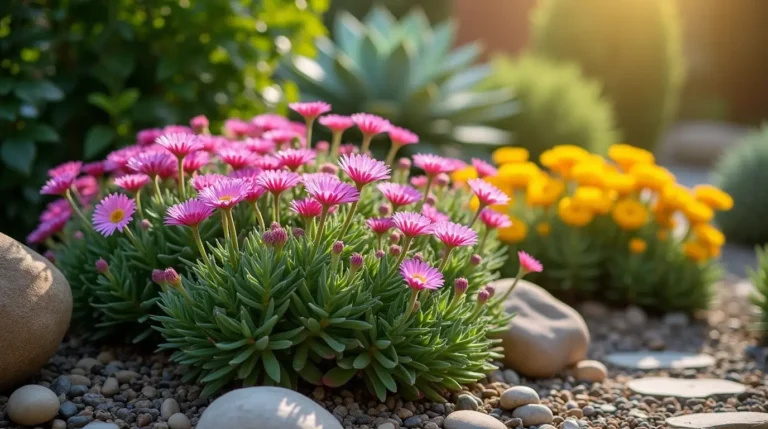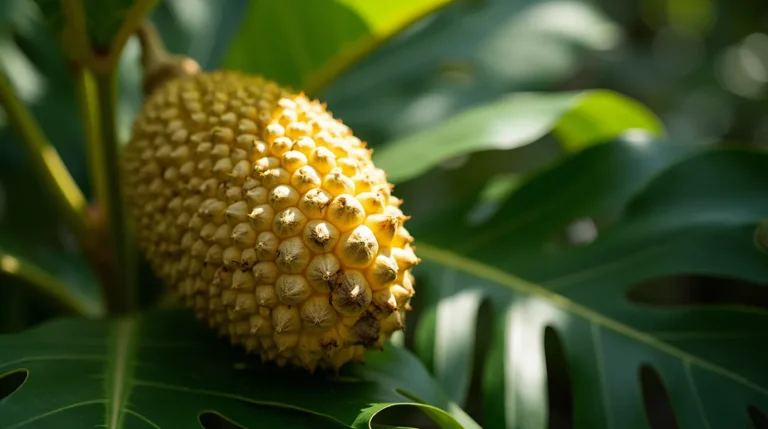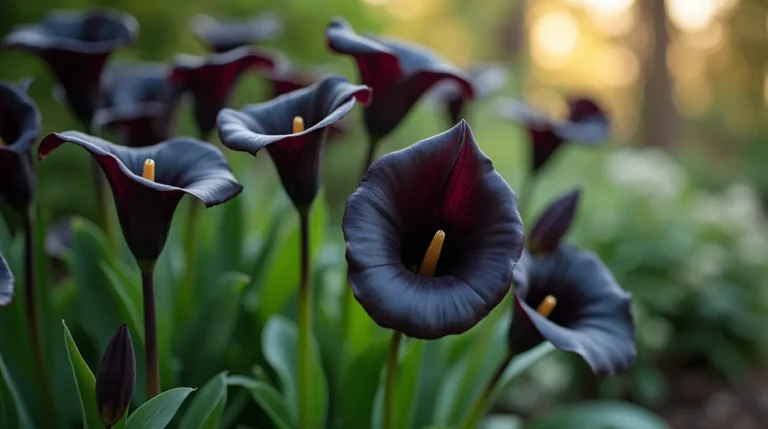Chocolate Cosmos Plant Care: Everything You Need to Know
The Chocolate Cosmos is a unique and fascinating flower known for its deep, rich color and distinctive scent. Originating from Mexico, this plant has gained popularity worldwide for its beauty and intriguing characteristics.

Caring for a Chocolate Cosmos plant requires attention to its specific needs, including appropriate soil, sunlight, and watering conditions. Understanding these requirements is crucial for gardeners who wish to cultivate this exotic flower successfully.
Key Takeaways
- Understand the basic needs of the Chocolate Cosmos plant.
- Learn about the optimal conditions for its growth.
- Discover tips for maintaining its health and beauty.
- Explore common challenges in caring for this unique flower.
- Find out how to propagate Chocolate Cosmos effectively.
What Are Chocolate Cosmos?
The Chocolate Cosmos, or Cosmos atrosanguineus, is a unique flowering plant that has captured the hearts of gardeners and flower enthusiasts alike. Known for its deep red to maroon petals and a distinct chocolate fragrance, this flower is a standout in any garden setting.

Origin and History
Native to Mexico, the Chocolate Cosmos was first discovered in the 1800s. It has since been cultivated in various parts of the world for its unique beauty and fragrance. The flower’s history is as fascinating as its appearance, having been a part of traditional Mexican culture.
Distinctive Features
One of the most distinctive features of the Chocolate Cosmos is its deep red to maroon petals, which give it a velvety appearance. The flower’s chocolate scent is another notable characteristic, making it a favorite among gardeners and flower arrangers.
| Feature | Description | Benefit |
|---|---|---|
| Petals Color | Deep Red to Maroon | Unique aesthetic appeal |
| Fragrance | Chocolate-like scent | Attracts pollinators and adds sensory experience |
| Growth Habit | Perennial | Returns annually with proper care |
All About Chocolate Cosmos Plants
The Chocolate Cosmos plant is a perennial favorite among gardeners, cherished for its beautiful, fragrant blooms. These plants are not only admired for their aesthetic appeal but also for their relatively low maintenance requirements.
Plant Characteristics
Chocolate Cosmos plants are known for their dark, velvety petals that resemble chocolate in color, hence their name. They produce flowers that are not only visually appealing but also emit a strong, sweet fragrance reminiscent of chocolate. The plants can grow up to 3 feet tall, with a spread of about 1-2 feet, making them a striking addition to any garden.

Growth Habits
Chocolate Cosmos plants are perennials in USDA zones 7-11, meaning they come back year after year in warmer climates. In cooler zones, they are often grown as annuals or lifted and stored during the winter months. They thrive in well-draining soil and full sun, making them ideal for areas that receive plenty of sunlight. Their growth habits make them suitable for borders, containers, or cut flower arrangements.
Popular Varieties of Chocolate Cosmos
Chocolate Cosmos has several varieties that are popular among gardeners due to their unique features. These varieties offer a range of characteristics that make them appealing to different gardeners.
Cosmos atrosanguineus
Cosmos atrosanguineus is one of the most well-known varieties of Chocolate Cosmos. It is prized for its deep, rich maroon flowers that have a chocolate-like scent. This variety is a tuberous perennial, native to Mexico, and is known for its ability to attract butterflies and other pollinators.

Hybrid Varieties
Hybrid varieties of Chocolate Cosmos have been developed to offer improved traits such as larger flowers, stronger stems, and a wider range of colors. These hybrids are often more vigorous and easier to grow, making them popular among gardeners. Some hybrids also offer enhanced fragrance and longer blooming periods.
| Variety | Characteristics | Growing Conditions |
|---|---|---|
| Cosmos atrosanguineus | Deep maroon flowers, chocolate scent | Full sun, well-drained soil |
| Hybrid Varieties | Larger flowers, varied colors, stronger stems | Full sun to partial shade, fertile soil |
Ideal Growing Conditions
To grow Chocolate Cosmos successfully, it’s essential to understand its ideal growing conditions. These plants have specific requirements that, when met, allow them to thrive and produce their characteristic deep red, chocolate-scented flowers.
Climate Requirements
Chocolate Cosmos prefer a warm and temperate climate. They thrive in USDA zones 7 through 11, where winters are not too harsh. In cooler climates, they can be grown in containers that are brought indoors during the winter months. The ideal temperature for growth is between 65°F and 85°F (18°C to 30°C).
Soil Preferences
The soil for Chocolate Cosmos should be well-draining and rich in organic matter. A slightly acidic to neutral soil pH, ranging from 6.0 to 7.0, is ideal. Enriching the soil with compost or well-rotted manure improves fertility and drainage, encouraging strong root growth.
Sunlight Needs
Chocolate Cosmos require full sun to partial shade. In hot climates, providing some afternoon shade can help protect the plant from scorching. In general, they need at least 6 hours of direct sunlight per day to bloom well. Ensuring adequate sunlight is crucial for the plant’s energy production and flowering.

Planting Chocolate Cosmos
To successfully grow Chocolate Cosmos, it’s essential to understand the best planting practices. This includes knowing when to plant, how to plant, and how to space these beautiful flowers.
When to Plant
The ideal time to plant Chocolate Cosmos is in the spring, after the last frost. This gives the tubers time to establish before the intense summer heat sets in. In warmer climates, you can also plant in the fall, about 8 weeks before the first frost.
How to Plant
Planting Chocolate Cosmos can be done in both containers and garden beds. The method you choose depends on your preference and the specific growing conditions.
Container Planting
For container planting, select a pot that is at least 6-8 inches deep to accommodate the tubers. Use a well-draining potting mix and plant the tubers 2-3 inches deep.
Garden Bed Planting
When planting in a garden bed, ensure the soil is well-draining and rich in organic matter. Plant the tubers 2-3 inches deep and water thoroughly.
Spacing Guidelines
Proper spacing is crucial for the healthy growth of Chocolate Cosmos. Plant the tubers 12-18 inches apart to allow for adequate air circulation and growth.
| Planting Method | Depth | Spacing |
|---|---|---|
| Container | 2-3 inches | As needed |
| Garden Bed | 2-3 inches | 12-18 inches |

Watering Requirements
Understanding the watering needs of Chocolate Cosmos is essential for their care. Proper watering ensures that these plants thrive and bloom vibrantly throughout the growing season.
Watering Frequency
The frequency of watering Chocolate Cosmos depends on several factors, including climate, soil type, and the time of year. Generally, these plants require consistent moisture, especially during hot and dry weather. Watering once or twice a week is usually sufficient, but this may need to be adjusted based on specific conditions.
Signs of Over- and Under-Watering
It’s crucial to recognize the signs of both over- and underwatering to adjust your watering schedule accordingly. Over-watering can lead to root rot, indicated by yellowing leaves and a soft, mushy stem. Under-watering, on the other hand, can cause wilting and a decrease in flowering. Adjusting your watering frequency based on these signs will help maintain the health of your Chocolate Cosmos.
By paying close attention to the watering needs of your Chocolate Cosmos and adjusting your care routine as necessary, you can enjoy a vibrant display of these beautiful flowers throughout the growing season.
Fertilizing Your Chocolate Cosmos
To keep your Chocolate Cosmos thriving, it’s essential to understand the fertilization needs of these unique plants. Fertilization plays a critical role in promoting healthy growth and maximizing the flowering potential of Chocolate Cosmos.
Types of Fertilizers
When it comes to fertilizing Chocolate Cosmos, the type of fertilizer used can significantly impact the plant’s performance. A balanced, water-soluble fertilizer is recommended, as it provides the necessary nutrients for healthy foliage and flowering. Organic fertilizers, such as compost or well-rotted manure, can also be beneficial, offering a slow release of nutrients that promote soil health.
Fertilizing Schedule
The fertilizing schedule for Chocolate Cosmos is relatively straightforward. Start fertilizing when the plants are about 6 inches tall, and continue to feed them every 4-6 weeks during the growing season. It’s also a good practice to dilute the fertilizer to half the recommended strength to avoid burning the roots. As one gardener notes, “Feeding my Chocolate Cosmos with a balanced fertilizer has made a noticeable difference in their vigor and flowering.”
Cease fertilizing once the plants begin to bloom, as this can encourage foliage growth at the expense of flowers. By following this simple fertilizing schedule, you can enjoy a vibrant display of Chocolate Cosmos flowers throughout the growing season.
Pruning and Maintenance
Proper pruning and maintenance are crucial for the health and appearance of your Chocolate Cosmos plants. Regular care ensures that your plants continue to thrive and produce beautiful, fragrant flowers.
Deadheading Techniques
Deadheading involves removing faded or spent flowers to promote continued blooming. For Chocolate Cosmos, this means regularly inspecting your plants for faded flowers and gently pinching or cutting them off at the base. This technique not only improves the plant’s appearance but also directs its energy towards producing new flowers.
Seasonal Pruning
Seasonal pruning involves cutting back your Chocolate Cosmos plants at specific times of the year to promote healthy growth. In the fall, after the first frost, cut back the stems to about 3-4 inches from the ground. This helps protect the tubers from cold damage. In the spring, remove any dead or damaged growth to make way for new stems.
Supporting Tall Plants
As Chocolate Cosmos plants grow, they can become quite tall and may need support to prevent them from toppling over. Use stakes or a trellis to gently support the stems, especially in windy conditions. This will keep your plants upright and ensure they continue to bloom beautifully.
Propagation Methods
The propagation of Chocolate Cosmos is a straightforward process that can be achieved through various methods, allowing gardeners to multiply these beautiful flowers.
Division of Tubers
One effective method for propagating Chocolate Cosmos is through the division of tubers. This process involves carefully digging up the tubers after the foliage has died back, typically in the fall. The tubers are then separated, ensuring each section has at least one growing eye. These sections are replanted in the spring, providing a head start on the growing season.
Growing from Seeds
Growing Chocolate Cosmos from seeds is another viable option. Seeds are sown in the spring after the last frost, in well-draining soil. It’s essential to keep the soil moist until germination, which usually occurs within a few weeks. Seed-grown plants may not bloom until the second year, but this method allows for a larger number of plants to be produced.
Taking Cuttings
Taking cuttings is a more advanced method of propagation. In the spring, when new growth appears, cuttings can be taken from the tips of stems. These cuttings are then rooted in a moist, well-draining medium. Once the cuttings have developed roots, they can be transplanted into individual pots or directly into the garden.
| Propagation Method | Timing | Success Rate |
|---|---|---|
| Division of Tubers | Fall or Spring | High |
| Growing from Seeds | Spring | Moderate |
| Taking Cuttings | Spring | Moderate to High |
By understanding and applying these propagation techniques, gardeners can effectively multiply their Chocolate Cosmos plants, bringing more of these rare and aromatic blooms into their gardens.
Seasonal Care for Chocolate Cosmos
To keep your Chocolate Cosmos thriving, it’s essential to adjust your care routine seasonally. This ensures that your plants receive the right amount of water, nutrients, and maintenance throughout the year.
Spring Care
In the spring, Chocolate Cosmos plants begin to emerge from their dormant state. It’s crucial to:
- Remove any dead foliage to promote new growth
- Apply a balanced fertilizer to boost plant health
- Ensure the soil is well-draining to prevent waterlogged conditions
Summer Maintenance
During the summer, Chocolate Cosmos are in full bloom. To maintain their health and encourage blooming:
- Water regularly, but avoid overwatering
- Deadhead flowers to promote continuous blooming
- Support taller plants with stakes or frames to prevent them from falling over.
Fall Preparation
As fall approaches, prepare your Chocolate Cosmos for the colder months by:
- Cutting back the foliage after the first frost
- Applying a layer of mulch to protect the tubers from freezing temperatures
- Storing tubers in a cool, dry place if you live in an area with harsh winters
Common Pests and Diseases
Growing chocolate cosmos is a delightful and rewarding endeavor, but it’s important to stay vigilant about the pests and diseases that can impact their health. Being informed is the first step in maintaining the health and beauty of your Chocolate Cosmos.
Identifying Pest Problems
Regularly inspecting your plants helps catch pest issues early, making them easier to manage. Common pests that might affect Chocolate Cosmos include aphids, spider mites, slugs, and snails.
Aphids and Spider Mites
Aphids are small, soft-bodied insects that feed on plant sap, while spider mites are tiny, spider-like insects that cause yellowing or bronzing of leaves. Common pests like aphids and spider mites can usually be controlled with insecticidal soap or neem oil.
Slugs and Snails
Slugs and snails are nocturnal pests that chew holes in leaves and flowers. They can be deterred using copper tape, crushed eggshells, or by hand-picking them at night.
Disease Prevention and Treatment
Diseases such as root rot, leaf spot, and powdery mildew can affect Chocolate Cosmos. Ensuring good air circulation, avoiding overwatering, and removing infected leaves can help prevent the spread of disease.
Natural Remedies
For those preferring organic methods, natural remedies like baking soda for fungal diseases and garlic spray for pests, can be effective. Always test a small area first to ensure the remedy doesn’t harm the plant.
Conclusion
Caring for your Chocolate Cosmos plants requires attention to detail and a commitment to providing the right growing conditions. By understanding the ideal climate, soil, and watering needs, you can enjoy these unique flowers throughout the growing season.
Proper care for your Chocolate Cosmos involves regular maintenance, including fertilizing, pruning, and protecting against pests and diseases. With the knowledge gained from this guide, you’re well-equipped to nurture your chocolate cosmos and enjoy their deep, rich colors and enticing fragrance.
As you continue to care for your chocolate cosmos plant, remember that patience and dedication are key. By following the guidelines outlined in this article, you’ll be able to create a thriving environment for your Chocolate Cosmos, allowing you to appreciate their beauty for years to come.
FAQ
What is the ideal climate for growing Chocolate Cosmos?
Chocolate Cosmos thrive in temperate climates with moderate temperatures and adequate moisture. They are hardy in USDA zones 7-11 and can be grown as annuals in cooler zones.
How often should I water my Chocolate Cosmos?
Water your Chocolate Cosmos regularly during the growing season, keeping the soil consistently moist but not waterlogged. Reduce watering in the fall to prepare the plants for dormancy.
Can I grow Chocolate Cosmos in containers?
Yes, Chocolate Cosmos can be grown in containers. When planting in containers, select one that is at least 6–8 inches deep with proper drainage holes. Use a well-draining potting mix and follow the same care guidelines as you would for plants in garden beds.
How do I propagate Chocolate Cosmos?
Chocolate Cosmos can be propagated through division of tubers, growing from seeds, or taking cuttings. Division of tubers is the most common method, and it is best done in the spring or fall.
What are some common pests that affect Chocolate Cosmos?
Chocolate cosmos are prone to pests such as aphids, spider mites, slugs, and snails. Regular monitoring and the use of organic or integrated pest management strategies can help keep infestations under control.
How do I care for Chocolate Cosmos in the winter?
In zones where Chocolate Cosmos are not hardy, dig up the tubers in the fall and store them in a cool, dry place until spring. In warmer zones, the plants may remain evergreen, but they still require some protection from extreme weather conditions.
Can I grow Chocolate Cosmos from seeds?
Yes, Chocolate Cosmos can be grown from seeds. Start seeds indoors 6–8 weeks before the last expected frost, and transplant them outdoors once the temperatures begin to warm.
How tall do Chocolate Cosmos plants grow?
Chocolate Cosmos plants can grow to be 2-3 feet tall, depending on the variety and growing conditions. They may require staking to prevent them from becoming too leggy or toppling over.
Are Chocolate Cosmos perennial?
Chocolate Cosmos are tender perennials in warm climates (USDA zones 7-11) and can be grown as annuals in cooler zones. They can be overwintered indoors or in a protected area to preserve the tubers.







